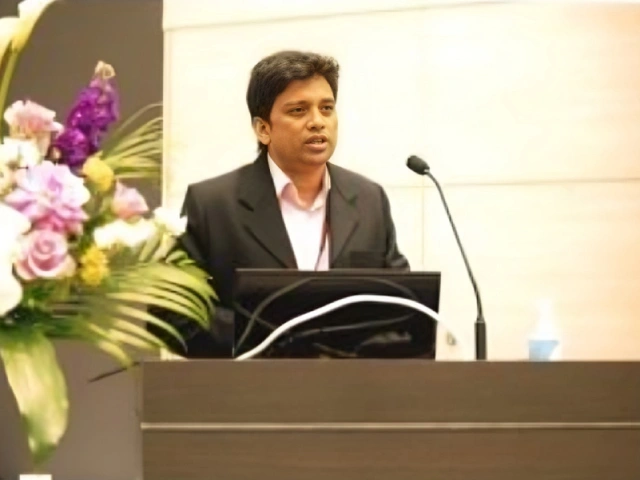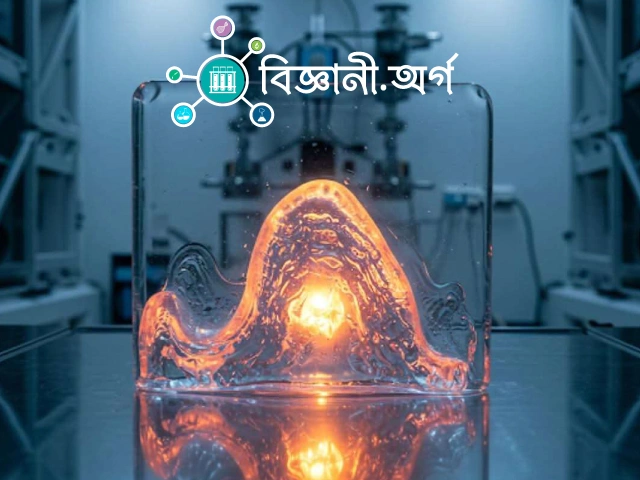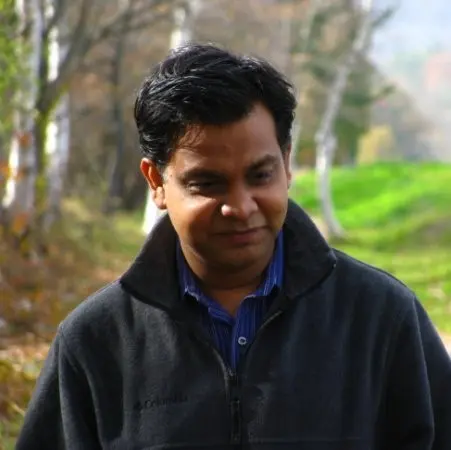[box type=”shadow” align=”aligncenter” class=”” width=””]
 Arif Reza Anwary is now a researcher at Bournemouth University, United Kingdom. He was an Assistant Professor in the Department of Computer Science and Engineering of United International University, Bangladesh. He received his M.Phil degree in Statistical Shape Analysis for the Human Back from the University of Wolverhampton, United Kingdom. He received his M.Sc in Computer Science from Gyeongsang National University, South Korea. He completed his B.Sc in Computer Science and Engineering from University of Asia Pacific, Bangladesh. His current research interest includes Internet of Things, Human Gait Analysis, Computing for Human Experience (CHI), Human-Robot Symbiosis and Cognition for Autonomous Agents.[/box]
Arif Reza Anwary is now a researcher at Bournemouth University, United Kingdom. He was an Assistant Professor in the Department of Computer Science and Engineering of United International University, Bangladesh. He received his M.Phil degree in Statistical Shape Analysis for the Human Back from the University of Wolverhampton, United Kingdom. He received his M.Sc in Computer Science from Gyeongsang National University, South Korea. He completed his B.Sc in Computer Science and Engineering from University of Asia Pacific, Bangladesh. His current research interest includes Internet of Things, Human Gait Analysis, Computing for Human Experience (CHI), Human-Robot Symbiosis and Cognition for Autonomous Agents.[/box]
সাক্ষাৎকার: বিজ্ঞানী.অর্গ
[box type=”shadow” align=”aligncenter” class=”” width=””]বিজ্ঞানী.অর্গঃ বাংলাদেশে গবেষনা করে এখন আপনি যুক্তরাজ্যে গবেষনা করছেন। কেমন লাগছে যুক্তরাজ্যে কাজ করতে?
আরিফ রেজা আনোয়ারিঃ Over a decade, I have developed a number of academic, organizational and inter-disciplinary projects supported by Asia Pacific University, United International University, Access to Information (A2I) and ICT Ministry. I have also research experience on Autonomous Under Water Vehicles (AUVs) in Gyeongsang National University, South Korea, and human back deformity analysis in Wolverhampton University, United Kingdom. However, I really enjoyed my research work in Bangladesh. There is no other option rather than innovation in the development of a country which universities, as well as government, is now realizing. Thus, Bangladesh government has taken different initiatives with the slogan of “Digital Bangladesh”. A2I, ICT ministry, BASIS and other ministries have taken different initiatives such as Innovation Fund, Freelance Training, Supporting Startups, and many others. Although we have a lot of problems in Bangladesh, these initiatives will definitely have a significant impact on the growth of the economy, education, and society soon. Thus, the working environment, support, and opportunities are also increasing for researchers in Bangladesh.
Actually, United Kingdom is one of the best among developed countries for quality of life where jobs are relatively well-paid, individual rights are respected and work conditions are subject to rules. As a researcher, we have free access to the library (even paid articles are free of charge), access to different laboratories (electronics, mechanical, manufacture, and production etc.) and open for interdisciplinary research collaboration. With these facilities, I feel fortunate for this opportunity to conduct my research at Bournemouth University.[/box]
[box type=”shadow” align=”aligncenter” class=”” width=””]বিজ্ঞানী.অর্গঃ আপনার গবেষনার বিষয়বস্তু কি?
আরিফ রেজা আনোয়ারিঃ I have been conducting research on gait analysis at Bournemouth University. Actually, every individual’s gait pattern should be symmetrical where right and left sides performing identical movements. Literature shows that gait asymmetry is an indicator of different diseases and disease progression. Gait/ balance disorder is also a major cause of falls in older adults. Our research investigates gait variability of young and elderly to understand the difference of gait patterns, quantify gait pattern changes and identify abnormal gait patterns over time. We also focus on how different a person’s gait from a normal persons’ result a fall. To address these challenges, we develop an affordable wireless wearable multi-sensor based personalized gait monitoring system to identify gait variable changes, monitoring of gait asymmetry, classify abnormal gait patterns and assess of elderly fall risk in order to reduce the potential risk associated with elderly fall so that elderly people could lead quality of life. [/box]
[box type=”shadow” align=”aligncenter” class=”” width=””]বিজ্ঞানী.অর্গঃ কেন এই বিষয়ে গবেষনা করছেন?
আরিফ রেজা আনোয়ারিঃ Actually elderly population in number are growing all over the world. Currently, 10 million people are over 65 years and 3.4 million people (one in three) fall every year in UK (Cracknell 2010). Approximately one-third of the total population in the United States and Australia are aged over 65 years and reported of yearly fall (Lord et al. 1993; Organization 2007). The fall rate for Asia is around 20% (Yu et al. 2009). Again, China’s one child per couple policy (OCP) was established in 1979 results increasing proportion of elderly is producing profound social and economic. Therefore, elderly fall is now one of the major global concerns due to aging and tens of millions of elderly people fall each year throughout the world. It can affect the quality of life, health and social care costs for elderly people. European populations, which concluded that even if the relative inequalities would not increase in the future, the excess deaths that would occur, would still be increasing due to the aging of the population. These findings imply that social and economic factors are strongly related to the changes in elderly fall-related mortality rates. To address the elderly fall issue, researchers used different wearable and ambient sensors for fall detection with high accuracy, however concerning the scope of identify long-term gait pattern changes and classify gait abnormalities based fall prediction in order to take protective actions that prevent falls occurrence is still challenging and not many research works has been conducted in this area. This draw my attention and I became interested to conduct the study in this area and focus on to investigate gait variability of young and elderly to understand the difference of gait patterns quantify, gait pattern changes and identify abnormal gait patterns over time contributing to a fall.[/box]
[box type=”shadow” align=”aligncenter” class=”” width=””]বিজ্ঞানী.অর্গঃ রোবটিক্স ভবিষ্যতে কি ধরনের ভূমিকা রাখতে পারে বলে মনে করেন?
আরিফ রেজা আনোয়ারিঃ Actually, the modern concept of robotics is begun with the term of the Industrial Revolution. We have experienced Industrial Revolution 1.0 (water and steam power), 2.0 (electricity powered assembly line) and 3.0 (PLC Modicon 084, a new era of electronic and IT systems). Now the concept of Industry 4.0 (with specific design principal, significance, impact and rigorous) of cyber-physical systems enables tremendous scope in different domains such as healthcare, automation and manufacturing industries with minimal human input. It also opens many doors including Internet of Things, Cloud Computing, and Cognitive computing etc. I was fascinated by humanoid from my childhood and it is one of the main world trends in technology today. The diversity of this technology is really huge and increasingly entering our lives and most dramatically in industries. This umbrella is so big covering a part of AI. AI is again a vast area started in the 1950s opens the door of Machine Learning in 1980s and this opens another door name Deep Learning 2010. Using deep learning, Google and Microsoft both beat the best human score in the ImageNet challenge. Thus AI has a bright future in contributing to Industry 4.0.
Due to this rapid technological development, industrial automation is also becoming popular. Robots are increasingly being used in industry results both positive and negative impacts on business and employees. Robotics areas are actually creating new opportunities in the job market that increases positive impact in county’s economic growth development. Again, robots are replacing in low-skilled workers and automating the tasks that they perform. However, many of us fail to realize that due to new innovation, new companies are constructed more and more so that low-skilled workers will never face the problem. A new recent study shows that industrial robots are good for the economy. Thus the future of robotics is very bright in the contribution of country’s economy.
With our ultra-modern technology, next generation of humanoid will be a comparison with human as it will be so realistic of looking face, hair, skin, nose, mouth and eyes etc. AI will play a pivotal role to allow a robot perform human-like activities, gestures, and behavior. Embedded sensor fusion will enable to react naturally in the environment. Other human features like eyes blink and move, chest move during the breath, and change facial expression etc. will be realistic. With these features, the beauty of the technological machine will turn into a life like human. The experience of interacting with such humanoid will add a new dimension of human life.[/box]
[box type=”shadow” align=”aligncenter” class=”” width=””]বিজ্ঞানী.অর্গঃ বাংলাদেশের মতন তৃতীয় বিশ্বের দেশের জন্য রোবটিক্স কি কোন ভূমিকা রাখতে পারে? (অনেক সময় বাংলাদেশের ছাত্র/ছাত্রীরা এটি নিয়ে পড়তে চায় কিন্তু সত্যিই এটির প্রয়োগ বাংলাদেশে হবে কিনা তা নিয়ে সন্দেহের কারণে এমনটি হয়)
আরিফ রেজা আনোয়ারিঃ Actually, robotics field is the dynamic field and has several aspects: Mechanics, Motor Controls, Sensors, Actuators, Vision, Computing and AI etc. The development of robots is useful in various fields like industrial automation, healthcare, army, transportation, manufacturing, production and many others. There are multiple career options available in the field of robotics considering its diversity. There are numerous companies working on these individual fields for designing, structuring, building and applications in different domains. Robotics jobs are also available in space research (ISRO, NASA etc), entertainment (x-Box, PlayStation etc), army (detect bombs, explosive), bank (stocks), and medicine areas. An article of RoboticsTomorrw shows that robotics engineers receive the highest salary in New York and San Francisco.
We see that developed countries like USA and UK are investing money for companies in China over last few decades. Now China is known as rapidly developed country with the highest economic condition. China is now focusing on their quality of work and interested in infrastructure investments and trade opportunities (One Belt, One Road) with Bangladesh. This is the right time to enhance our manufacturing sectors. There are hardly few companies in Bangladesh working on industrial automation (textile, agriculture, home and medical etc), AI in e-commerce, ICT and healthcare etc. However, universities are organizing regular exhibitions, seminars, workshops, and conferences to share our expertise. Private organizations are exporting products to abroad. As we have manpower strength, we should make constructive plan to build more manufacturing industries and play an important role in the world marketplace.
A robotics course trains and educates in the field of AI, manufacturing, embedded system, PLC, and robotic control etc. These courses are inter-disciplinary with CSE, EEE, and Mectronics etc. Once a student has a clear understanding of a product development steps, he/she is able to develop the commercial product. Many of my students from CSE and EEE are now doing Start-up business. There are different courses in CSE and EEE where they develop projects based on their idea and showcase in different exhibitions that help them to become entrepreneurs. [/box]
[box type=”shadow” align=”aligncenter” class=”” width=””]বিজ্ঞানী.অর্গঃ প্রবাসে বসেও বাংলাদেশের তরুনদের নিয়ে আপনি বেশ কিছু কাজ করছেন। প্রজেক্টগুলি সমন্ধে একটু বলুন।
আরিফ রেজা আনোয়ারিঃ We have developed Refreshable Digital Braille Display, Accessible Dictionary, Daisy Player, Braille Leaning Kit, Accessible Medicare, Automatic Urometer, Smart Sitting Monitor, and e-cigarette Puff Detection etc. A list of my other projects can be found at the following links.
http://robotbangla.com/arifreza/inner_page/Projects/Projects.html
http://robotbangla.com/arifreza/inner_page/Projects/UniversityOfAsiaPacific.pdf [/box]
[box type=”shadow” align=”aligncenter” class=”” width=””]বিজ্ঞানী.অর্গঃ তরুন শিক্ষার্থি যারা বিজ্ঞানে কাজ করতে চায় তাদের জন্য আপনার কোন উপদেশ বা বক্তব্য কি?
আরিফ রেজা আনোয়ারিঃ “Creativity is a renewable resource. Be as creative as you like, as often as you can, because you can never run out of it!”[/box]
বিজ্ঞান ও প্রযুক্তি সম্পর্কে আরো নতুন নতুন সংবাদ জানতে সাবস্ক্রাইব করুন।
[mc4wp_form id=”3448″]













































Leave a comment